Introduction: Why McLaren is a Benchmark for Performance and Design
When you think of high-performance supercars, the name McLaren is likely one of the first to come to mind. Known for its meticulous attention to detail, cutting-edge technology, and exceptional track-ready performance, McLaren has earned a place among the world’s top automotive manufacturers.
But what exactly makes McLaren cars so special? Is it the staggering acceleration, the precision handling, or the uncompromising pursuit of automotive excellence? In this article, we’ll take a deep dive into McLaren’s most iconic models, examining their design, performance, engineering, and how they compare to other leading supercar manufacturers like Ferrari, Lamborghini, and Porsche.
1. The McLaren Philosophy: Driving Performance Through Innovation
A Legacy of Racing Excellence
McLaren’s foundation in racing is crucial to understanding the brand’s core philosophy. The company began in Formula 1 under the guidance of Bruce McLaren in 1963. With innovations like carbon-fiber monocoque chassis and a focus on weight-saving technology, McLaren’s success on the track directly influences its road cars, leading to a design approach that blends race-inspired performance with everyday drivability.
The Science of Lightweight Engineering
McLaren cars are renowned for their lightweight construction, which directly impacts performance. The use of carbon fiber—particularly in McLaren’s Monocage chassis—ensures the cars remain light while maintaining superior strength and rigidity. The lightness of McLaren vehicles allows for improved handling, acceleration, and braking, which is crucial for both track and road performance.
Aerodynamics and Design Excellence
McLaren’s design philosophy focuses heavily on aerodynamics. The brand continuously pushes the envelope when it comes to active aerodynamics, with advanced features like active rear spoilers, front flaps, and aerodynamic channels integrated into the bodywork. These elements adjust to driving conditions, ensuring optimal downforce at high speeds and reducing drag for improved efficiency.
2. McLaren’s Road Cars: An In-Depth Look at Performance and Design
The McLaren F1: A Game-Changer in the Supercar World
When it comes to McLaren’s history, the McLaren F1 holds an irreplaceable place. Released in 1992, the F1 was not only a landmark in McLaren’s history but also in the automotive world. Powered by a 6.1-liter BMW V12 engine, it produced 627 horsepower and could reach a top speed of 240 mph, making it the fastest production car of its time. Its central driving position, lightweight carbon-fiber monocoque, and groundbreaking driver-focused layout set a new standard in supercar design.
- Performance Review:
- Acceleration: 0-60 mph in 3.2 seconds
- Top Speed: 240 mph (still a remarkable achievement)
- Handling: Balanced and responsive, thanks to a central driving position that provides optimal weight distribution.
- Design and Features:
- Materials: Extensive use of carbon fiber in the monocoque and bodywork for extreme lightness.
- Driver’s Experience: The central driving seat offered unmatched visibility and ergonomics, giving the driver an almost F1-like experience.
The McLaren MP4-12C: Modern Supercar Excellence
The MP4-12C, McLaren’s return to road cars in 2010, was designed as a direct competitor to cars like the Ferrari 430 Scuderia and Porsche 911 Turbo. Featuring a 3.8-liter twin-turbocharged V8 engine, it produced 592 horsepower and could accelerate from 0-60 mph in 3.3 seconds.
- Performance Review:
- Acceleration: 0-60 mph in 3.3 seconds
- Top Speed: 205 mph
- Handling: McLaren’s Proactive Chassis Control system ensured impeccable agility and cornering capability, rivaling the best in the industry.
- Design and Features:
- Carbon Fiber MonoCell: The 12C was the first McLaren car to feature the MonoCell, a one-piece carbon-fiber monocoque, reducing weight and improving structural rigidity.
- Technology Integration: The car was equipped with advanced infotainment systems, active aerodynamics, and dynamic suspension systems for enhanced performance and driver engagement.
The McLaren 720S: A Benchmark for Modern Supercars
Introduced in 2017, the McLaren 720S represents the pinnacle of McLaren’s commitment to performance and innovation. Powered by a 4.0-liter twin-turbocharged V8 engine producing 710 horsepower, the 720S is an exhilarating blend of lightweight agility, titanium performance, and luxury craftsmanship.
- Performance Review:
- Acceleration: 0-60 mph in 2.7 seconds, making it one of the fastest production cars in the world.
- Top Speed: 212 mph
- Handling: The Monocage II carbon fiber chassis and the advanced Proactive Chassis Control II system deliver track-like handling while maintaining comfort on everyday roads.
- Design and Features:
- Active Aerodynamics: The 720S employs an advanced active rear spoiler and front flaps that adjust depending on the car’s speed, ensuring the right balance of downforce and drag.
- Lightweight Carbon Fiber Construction: McLaren’s use of Monocage II ensures the 720S is both incredibly strong and lightweight, resulting in superior handling dynamics.
- Interior: The cabin is designed with a focus on luxury, featuring premium leather, digital displays, and driver-centric controls.
The McLaren Artura: A New Era in Hybrid Supercars
As McLaren continues to evolve, the Artura represents its first step into the world of hybrid supercars. Launched in 2021, the Artura combines a 3.0-liter twin-turbo V6 engine with an electric motor, producing a combined power output of 671 horsepower.
- Performance Review:
- Acceleration: 0-60 mph in 3.0 seconds
- Top Speed: 205 mph
- Handling: Thanks to carbon fiber construction and a lightweight hybrid powertrain, the Artura offers impressive handling, blending race car agility with supercar luxury.
- Design and Features:
- Hybrid Powertrain: The electric motor provides instant torque, while the V6 engine delivers high-revving performance, offering both efficiency and power.
- Interior: The Artura features a minimalist and modern interior, with an emphasis on a digital experience and driver ergonomics.

3. Performance: Comparing McLaren to Ferrari, Lamborghini, and Porsche
McLaren vs. Ferrari: Which is the Better Supercar?
McLaren and Ferrari have long been rivals in the supercar market. Both brands offer vehicles with remarkable performance and exquisite craftsmanship, but there are key differences that make each brand unique.
- Performance: Ferrari tends to focus on delivering raw emotion and a connection with the driver, whereas McLaren often delivers a more track-oriented, technology-driven performance. While Ferrari’s naturally aspirated V12s are known for their soulful sound, McLaren’s twin-turbo V8s provide a more clinical and efficient performance.
- Handling: McLaren’s lightweight chassis and active aerodynamics give it the edge when it comes to precise handling. Ferrari, however, has focused on developing engagement-focused suspension systems that add to the joy of driving.
McLaren vs. Lamborghini: The Battle of the Iconic Brands
While McLaren is known for engineering precision, Lamborghini is known for bold, striking design and raw, visceral power. The contrast in brand philosophy is evident when comparing models like the McLaren 720S and the Lamborghini Huracán Evo.
- Performance: Lamborghini is more likely to offer raw power with its naturally aspirated engines (like the V10 in the Huracán Evo), while McLaren is focused on performance and efficiency through its turbocharged and hybrid powertrains.
- Design: Lamborghini is renowned for its sharp, aggressive lines and extroverted design language, while McLaren favors sleek, aerodynamic forms that prioritize performance over aesthetics.
McLaren vs. Porsche: A Legacy of Performance
Porsche’s 911 Turbo S is often compared to McLaren’s 720S for its performance capabilities. The Porsche 911 offers timeless appeal, precision engineering, and reliable performance. McLaren’s 720S, on the other hand, offers advanced aerodynamics and a level of performance that eclipses many rivals, including Porsche.
- Performance: Porsche cars have a reputation for offering stability and predictable handling, while McLaren focuses on providing a superior driving experience with extreme acceleration and cornering ability.
- Brand Philosophy: Porsche aims to combine luxury with performance, while McLaren focuses on delivering pure racing-inspired thrills with minimalist interiors and lightweight designs.
4. McLaren’s Future: The Shift Toward Electrification and Hybrid Technology
As the automotive world moves toward electric vehicles (EVs) and hybrid technology, McLaren is embracing electrification in its road cars. The company’s Track25 strategy outlines plans to introduce hybrid versions of all its models by 2025, with an eventual shift toward full electric vehicles by 2030.
- Artura: The McLaren Artura is McLaren’s first hybrid supercar, featuring a V6 engine paired with an electric motor. This marks a significant shift towards sustainable high performance.
- Future Models: McLaren is also working on fully electric models that will deliver the same world-class performance with a zero-emission footprint.
Conclusion: Why McLaren is More Than Just a Supercar
McLaren represents the pinnacle of high-performance engineering, track-focused performance, and cutting-edge technology. Whether it’s the iconic McLaren F1, the race-inspired MP4-12C, the blistering 720S, or the innovative hybrid Artura, McLaren continues to push the limits of what’s possible in the world of supercars. Its commitment to lightweight materials, advanced aerodynamics, and pure performance makes McLaren cars stand out as some of the most desirable vehicles in the world.
As McLaren transitions into the electric future, it’s clear that the brand’s dedication to performance will continue to define its place in the automotive world. For anyone seeking the ultimate in luxury, innovation, and driving thrills, McLaren cars are a benchmark that will undoubtedly remain at the top of their class.



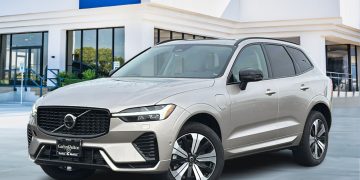


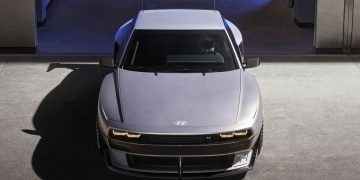


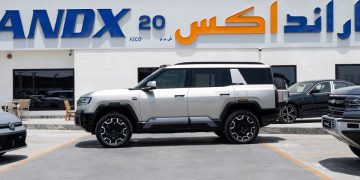

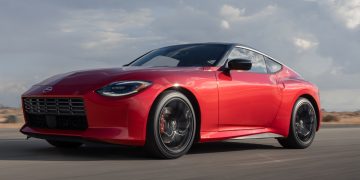









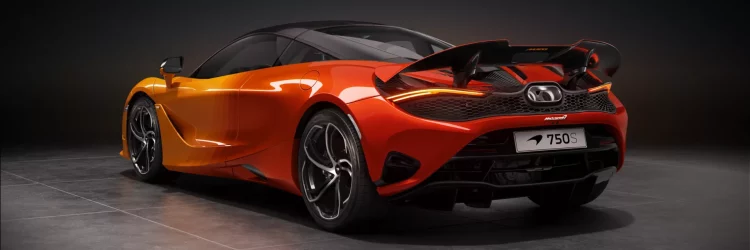












Discussion about this post